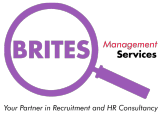How to Dress for a Formal or Casual Interview
- Posted By Harpers
- Careers
The first impression you make on a potential employer is incredibly important. When you meet a potential employer for the first time, they immediately form an opinion of you based on what you're wearing and how you carry yourself. Regardless of the work environment, it's important to dress professionally for a job interview because how you dress can either make or break the job interview.
In general, the candidate dressed in a suit and tie, or dress and heels, will make a much better impression than the candidate dressed in jeans and sneakers. That said, different industries have different expectations of how candidates and employees should dress. The appropriate dress code can vary greatly depending on company, industry, and location. For example, a tech start-up in Silicon Valley might frown on someone who dresses too formally, while a Fortune 50 company on Madison Avenue might frown on someone who dresses too casually.
Here's a breakdown of what to wear for a corporate position and what to wear for a more laid-back casual position. In both cases, being well-groomed with clean, untattered clothes is always required.
How to Dress for a Corporate Interview
Men's Interview Attire
Here are examples of interview outfits for men. Men should always default to wearing a suit. All clothes should fit well and be free of stains.
- Suit in a solid color such as navy, black, or dark grey
- Long sleeved shirt that is white or color coordinated with the suit
- Leather belt
- Tie
- Dark socks and conservative leather shoes
- Little or no jewelry
- Neat, professional hairstyle
- Limited amount of aftershave
- Neatly trimmed nails
- Portfolio or briefcase
In general, fashion for women is more complicated and varied than it is for men who have fewer options. It makes assembling an interview outfit a bit more challenging for women than for men. For instance, if you're wearing a dress or skirt, you need to decide if you should wear pantyhose or if bare legs are acceptable. Women also need to consider interview accessories and choose an appropriate purse. The best interview bags are ones that are professional and large enough to fit a resume but aren't flashy.
Here are the fundamental building blocks of what women should wear to a professional interview.
- Suit in navy, black, or dark grey
- Suit skirt just below or above the knee
- Coordinated blouse
- Conservative shoes
- Limited jewelry
- No dangling earrings or arms full of bracelets
- No jewelry is better than cheap jewelry
- Professional hairstyle
- Neutral colored pantyhose
- Light make-up and limited amount of perfume
- Clean, neatly manicured nails
- Portfolio or briefcase
What Not to Bring to the Interview
- Gum
- Coffee or soda
- If you have lots of piercings, leave some of your rings at home (earrings only is a good rule)
- If possible, cover tattoos
You can bring your smartphone but make sure it's on mute or vibrate during your interview. It avoids the risk of getting a distracting loud text alert or phone call mid-interview.
How to Dress for a More Casual Interview
When the workplace or the job is less formal, the dress code may be less formal as well. If you're not sure what to wear, it's fine to check with the person scheduling the interview. However, it's still important not to dress slovenly. Here are some casual options:
More Interview Attire
Other Interview Attire Tips
- Well in advance of your interview, make sure you have appropriate interview attire, and everything fits correctly.
- Get your clothes ready the night before, so you don't have to spend time getting them ready the day of the interview.
- If your clothes are dry clean only, take them to the cleaners right after an interview, so you're prepared for the next interview.
- Be sure to polish your shoes the night before.
- Bring breath mints with you to use before entering the building.







